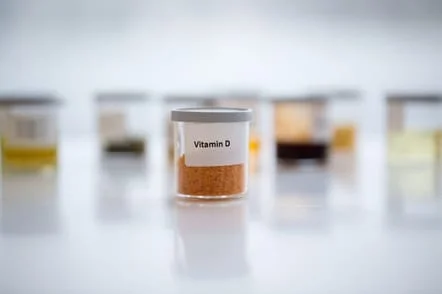Herring is a particularly good source of vitamin D. In Norway, vitamin D is added to one type of semi-skimmed milk (0.5 to 0.7 per cent fat) and to some types of dairy products such as cheese and butter. During the summer months, sunlight enables the body to make vitamin D in the skin.
Vitamin D's most important role is to maintain a stable level of calcium in the blood. In order for vitamin D to function, it must first be transported to the liver and converted into 25-hydroxyvitamin D (25OHD), and then to the kidneys to be converted into 1.25 dihydroxyvitamin D (1.25(OH)2D). Then, the 1.25(OH)2D increases calcium absorption in the intestines, increases the excretion of calcium from the bones and increases the reabsorption of calcium from the kidneys so that the level of calcium in the blood increases to a satisfactory level. It has long been known that vitamin D is important for bone health, but it has also become apparent in recent years that vitamin D may be important for the immune system, cancer prevention and mental health. During summer, sunlight is the most important source of vitamin D, as the ultraviolet rays produce vitamin D in the skin. In Norway, we produce vitamin D on our own from May to October. Diet is particularly important for maintaining a good vitamin D status the rest of the year, and an adequate intake of fat fish and vitamin D-enriched food helps ensure this. It may be necessary for some people, however, to take a vitamin D supplement during the winter months to maintain a good vitamin D status.
Lack of vitamin D
A severe vitamin D deficiency can cause damage to the skeleton, such as rickets in children and osteomalacia in adults. The consequences of a mild vitamin D deficiency are less well known.
Recommended intake
The authorities recommend a daily vitamin D intake of 10 micrograms for children and adults aged up to 75 years. An intake of 20 micrograms is recommended for people over the age of 75. It is recommended that children take vitamin D in the form of cod liver oil or vitamin D drops from the age of four to six weeks. It is also recommended that healthy adults take a vitamin D supplement, especially during the winter months. The upper tolerable limit for long-term vitamin D intake is set at 25 micrograms per day for children, and 50 micrograms per day for adults. The upper tolerable intake level represents the daily intake most people can take throughout their life without risk to their health.
Status in the population
The vitamin D status is measured on the basis of metabolite 25 hydroxyvitamin D in the blood. The vitamin D status is generally good in the Norwegian population, especially during the summer months. However, relatively large parts of the population have a low vitamin D level during the winter months. Children, pregnant women, breastfeeding women and the elderly may be at risk of vitamin D deficiency. In addition, dark-skinned people have a lower rate of vitamin D synthesis than white-skinned people. This means that certain groups of immigrants in Norway are also at risk of vitamin D deficiency. In 2006, the Norwegian Directorate of Health prepared an action plan to improve the vitamin D status in the population.
In fish feed
Today, farmed salmon has a lower vitamin D content because less marine ingredients are used in fish feed than used to be the case. In the EU, the permitted limit for adding vitamin D is very low. However, salmon can tolerate vitamin D being added to the feed, and work is underway to raise this limit so that salmon can remain a good source of vitamin D in the future as well.
